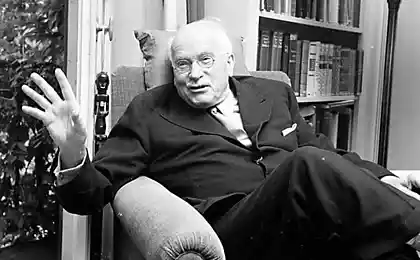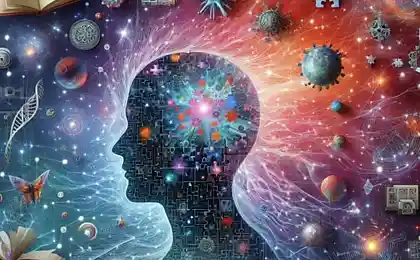147
What it really means to be yourself
What it really means to be yourself
There is no universal set of rules on how to be yourself, but there are several important habits that will help you in this regard.

In the age of social media and the endless flow of content, the issue of authenticity is becoming more relevant than ever. Every day we face the challenge of being ourselves, but what does that really mean? Psychologists argue that the search for the true self is not a one-time discovery, but a continuous process of self-discovery and self-development.
Key insight: Authenticity is not a static state, but a dynamic process of choosing between who we really are and who we think we should be.
The myth of the "true me"
The first misconception to be broken is the notion that there is a “true self” hidden within each of us that needs to be found and released. Modern personality psychology shows that we are a complex system of different aspects, roles and identities that can vary depending on the context.
Dr. Susan David of the Harvard School of Medicine notes in her research on emotional flexibility that trying to find the “only true” version of oneself often leads to internal conflicts and frustration. Instead, she suggests accepting the versatility of one’s personality as a natural feature of the human psyche.

The six pillars of authentic existence
1. Emotional honesty
Being yourself begins with an honest acknowledgement of your emotions, both positive and negative. Research by neuropsychologists suggests that suppressing or ignoring emotions requires significant cognitive resources and can lead to burnout.
Practical advice: Keep an emotional journal. Each night, write down the three emotions you experienced during the day and the situations that triggered them. This will help to develop emotional awareness.
2. Value self-determination
Authenticity is inextricably linked to understanding your core values. Psychologist Tim Kasser from the University of Rochester in his research showed that people whose activities correspond to their inner values, show higher levels of psychological well-being and life satisfaction.
Self-discovery exercise: Make a list of 10 times you’ve felt most alive and energetic. Analyze what values were realized in these moments – this is your inner compass.
3. Boundaries and self-respect
Setting healthy boundaries is not selfishness, but a prerequisite for authentic existence. Dr. Brene Brown, a researcher of vulnerability and shame, argues that boundaries define where we end and others begin.
People who don’t know how to say “no” often live other people’s lives, gradually losing touch with their true desires and needs. A Stanford University study found that the ability to set boundaries correlated with higher self-esteem and lower levels of stress.
4. Acceptance of imperfection
Paradoxically, striving for perfection often prevents you from being yourself. Perfectionism forces us to create an idealized version of ourselves that meets external expectations but does not reflect our true nature.
Imperfection is not a flaw; it is a reminder that we are all on this journey together. - Brene Brown.
5. Conscious presence
It is impossible to be yourself, being in a constant mode of “autopilot”. Mindfulness and mindfulness practices help develop the ability to notice your thoughts, feelings, and reactions without immediately assessing or trying to change them.

Research in neuroplasticity shows that regular meditation practice literally changes the structure of the brain, strengthening areas responsible for self-awareness and emotional regulation.
6. Creative expression
Creativity is not a privilege of the elect, but a basic human need for self-expression. Psychologist Mihai Csikszentmihalyi in his research on the state of flow found that creative pursuits promote the integration of various aspects of personality.
Creative challenge: Try each week to engage in a new type of creative activity - drawing, writing, music, dancing. The goal is not to achieve mastery, but to explore the different facets of your personality.
Social challenges of authenticity
One of the main obstacles to authenticity is social pressure and fear of rejection. Evolutionary psychologists explain this by saying that the need to belong to a group was critical to the survival of our ancestors.
In today’s world, however, the excessive need for approval can be an obstacle to personal growth. A study published in the Journal of Personality and Social Psychology found that people who learned to balance authenticity and social adaptation showed higher rates of psychological well-being.
The golden rule: Being yourself does not mean being selfish or insensitive to others. This means making informed choices about when and how to adapt to social expectations without losing touch with your core values.
Practical strategies for developing authenticity
The Reality Testing Technique: Ask yourself regularly, “Is this really what I want or what I think is expected of me?” Honest answers to this question can be a revelation.
Role experiment: Try to consciously try on different aspects of your personality in different situations. This will help you understand which roles are really suitable for you and which were imposed from the outside.
Practices of vulnerability: Start small by sharing your true thoughts or feelings with a loved one. Gradually expand the circle of people with whom you can be open.
Remember, being yourself is not an end goal, but a way of life. It is a daily choice in favor of being honest with yourself and a willingness to grow despite discomfort.
Conclusion
Authenticity is not a luxury available to a select few, but a basic need of every person. In a world where external influences are becoming increasingly aggressive, the ability to remain self becomes a form of resistance and an act of self-preservation.
The path to authenticity requires courage, patience and constant self-development. But the reward — a life filled with meaning, deep relationships, and inner peace — is worth the effort.
Glossary
Authenticity Conformity of external manifestations to internal beliefs, values and feelings of a person.
Emotional flexibility The ability to adapt to changing circumstances and cope with complex emotions in a healthy way.
Mindfulness Practice conscious presence in the present moment without trying to change or evaluate it.
Perfectionism The desire for perfection, often accompanied by the fear of making a mistake or not meeting high standards.
Flow status A psychological state of complete absorption in activity, characterized by high concentration and a sense of satisfaction.
Emotional burnout A state of physical, emotional and mental exhaustion caused by prolonged stress.
Neuroplasticity The ability of the brain to change its structure and function in response to experience and learning.
Zara from Portugal: European fashion with delivery to Kazakhstan via Meest Shopping
6 types of behavior of the interlocutor that can not be tolerated























